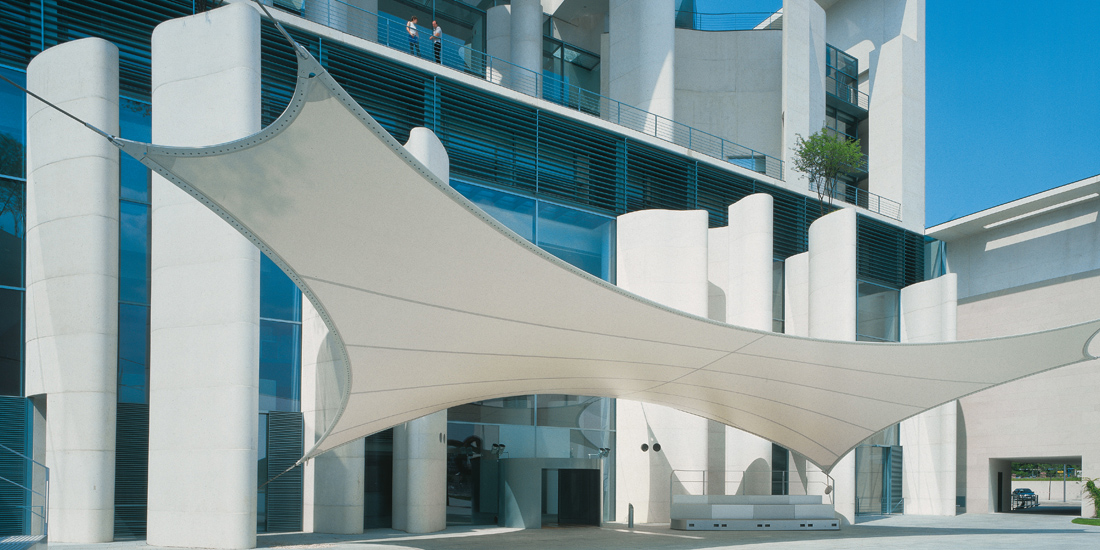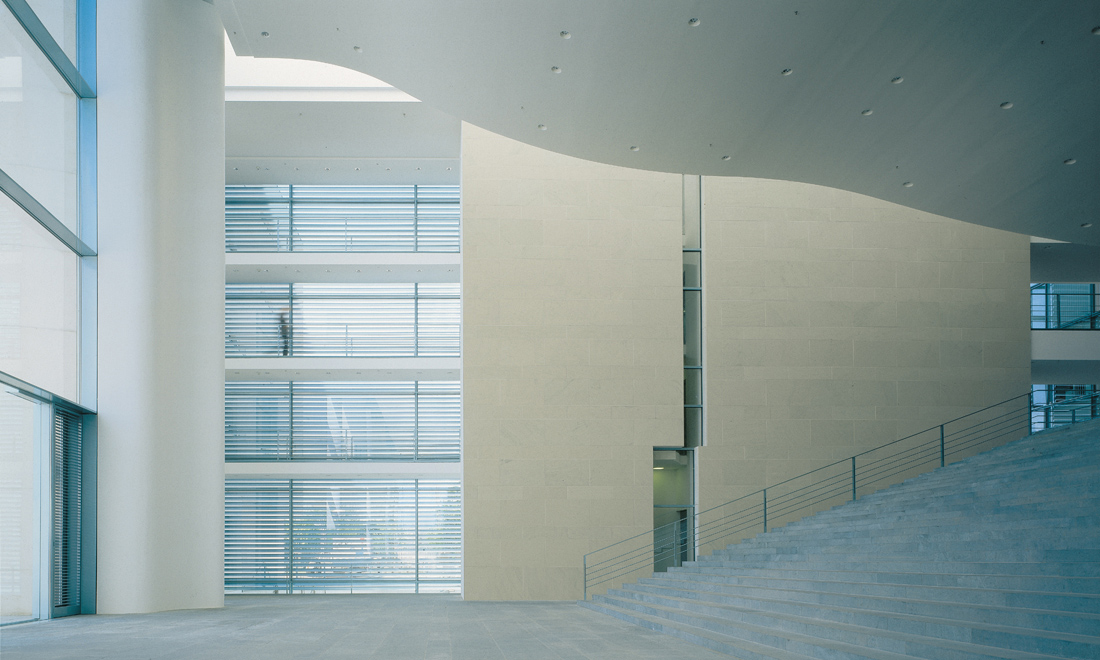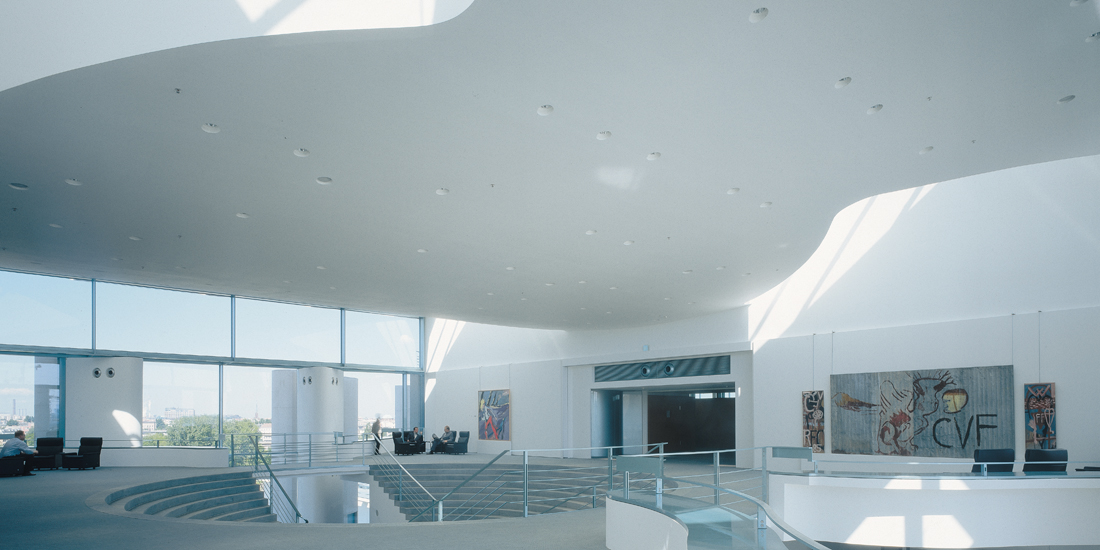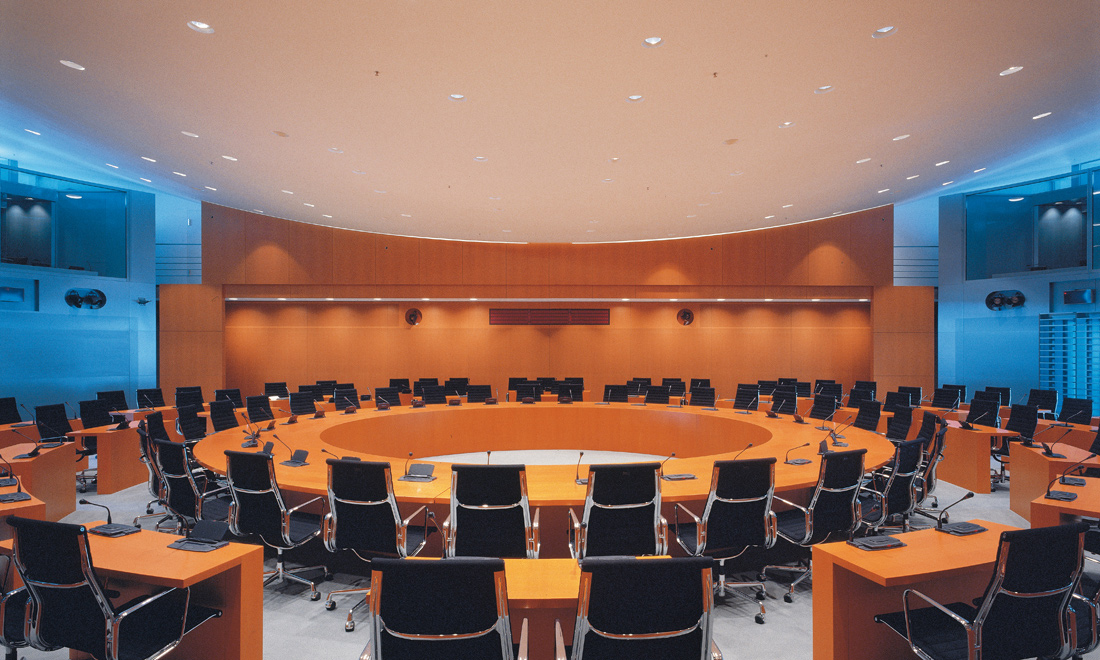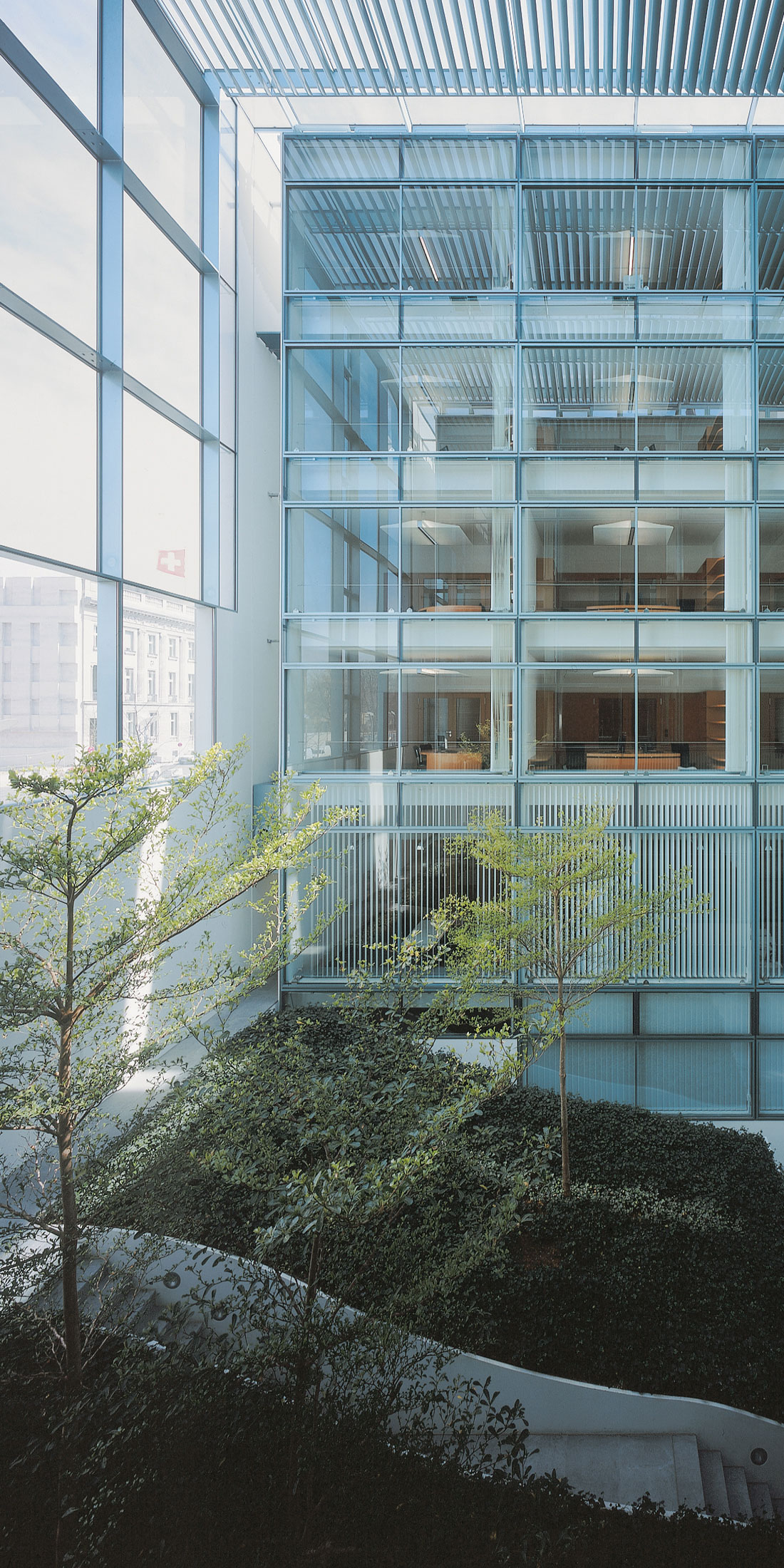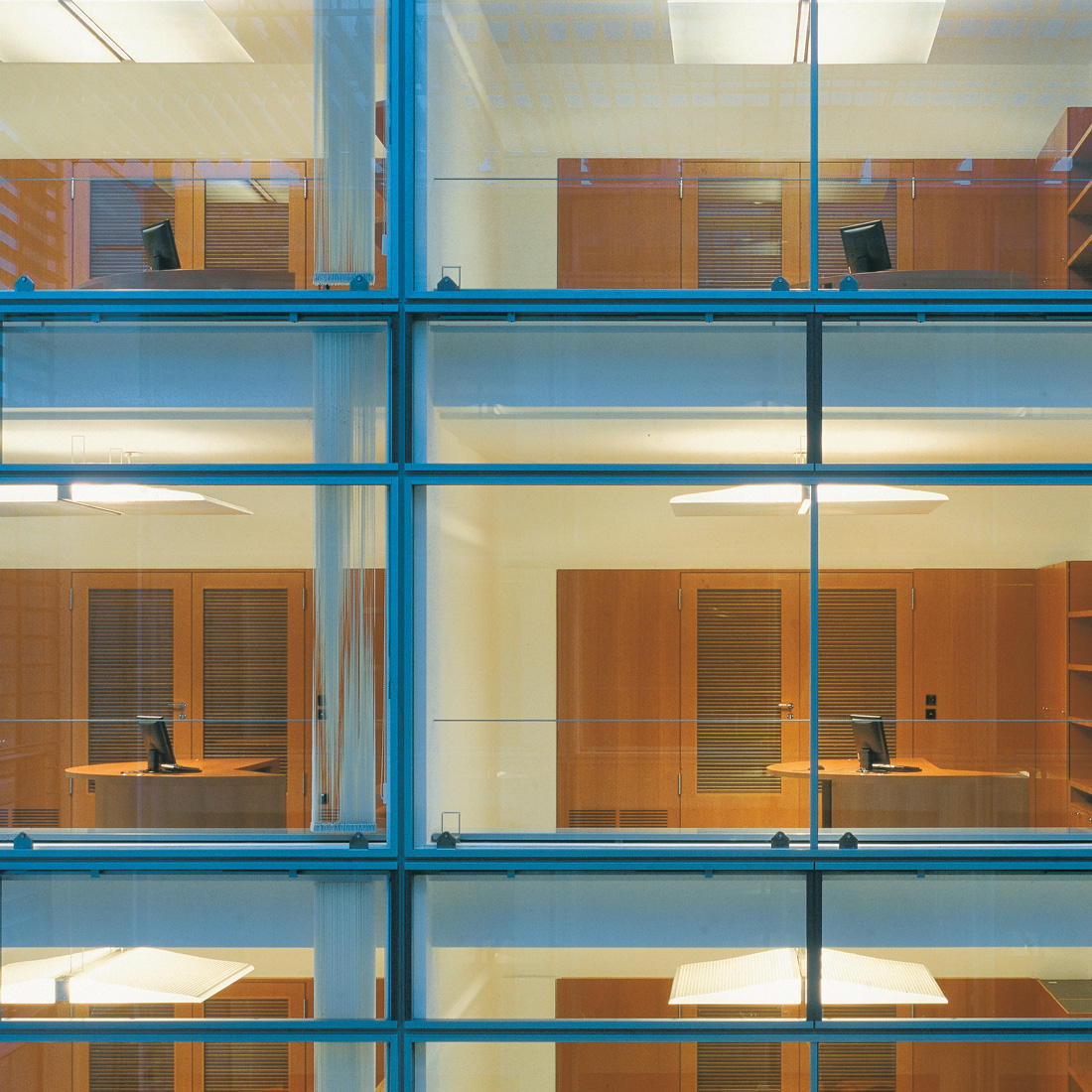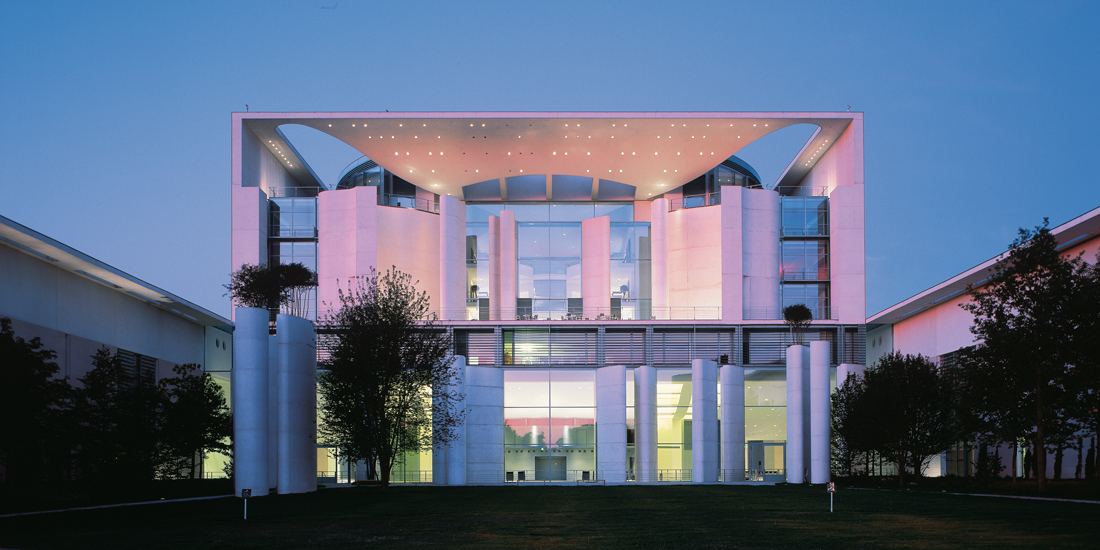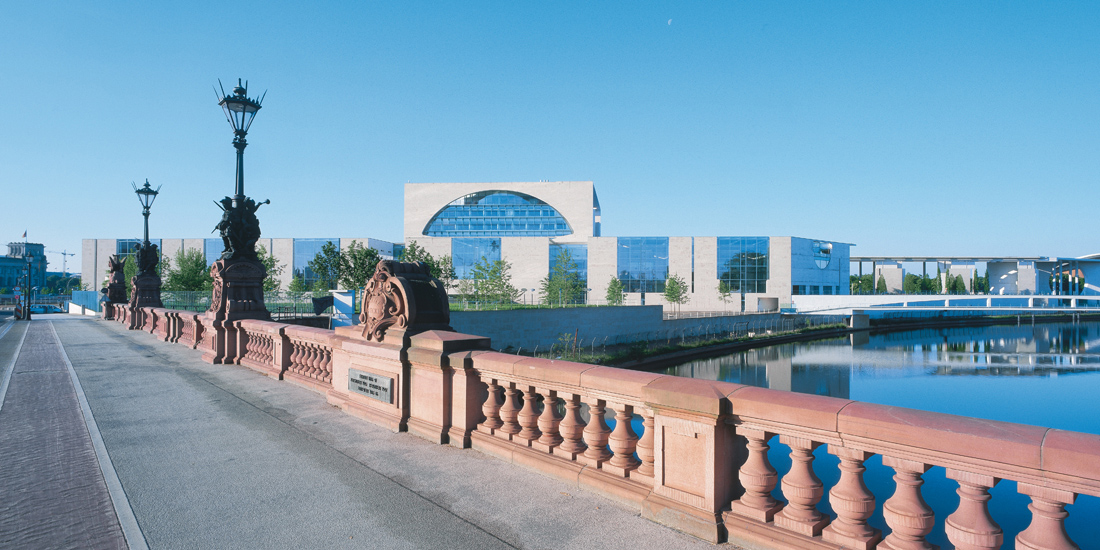Avoid the ‘torpor of the facade’, every facade, shape space, break open the east and west fronts of the Chancellery – the architects had a particular kind of liberation in mind: assert the lightness of stone against those very German – and Berlinesque – tectonics and Teutonics, tease some dynamics and movement from the static demands of a large structure, inspire it with the hint of a new beginning.
So the whole thing is like a great, calm river – from the garden through the foyer, down across the courtyard into the Forum and across to the Alsenblock, the sky lobby columns braced against the current like piers of a bridge. ‘Panta rhei’ – ‘everything flows’, nothing stays as it is – but that would be a highly political interpretation of the Chancellorship.
But in all this one thing was clear to us: our iconographic emphasis of the Chancellery’s presence provoked the ‘historical frustration’ of certain minds with delicate nerves who would have preferred, for the federal buildings in Berlin, an unimposing, modest articulation, a sequel to the understatement rehearsed in Bonn.
This fear of unseemly performance found common cause here with a Berlin strategy similar in complexion but with older origins: the fear of greatness, a dearly paid experience down the last century which has already become instinctive, a very German kind of anxiety which distorts scale, clouds any sense of appropriate measure, blinds the eye to proportion; and all too often – just to be on the safe side – it joins forces with the fear of anything new.
For a viable future, architecture must renounce all soporific seniority and, faithful to the creed that ‘art offers favourable odds to impossibility, but safe bets are deceptive and don’t stand a chance’, it must gamble on space, inspired by the knowledge that ‘we will never know what space is’.
SITE
Willy-Brandt-Strasse 1
10557 Berlin
TYPOLOGY
Government building
CLIENT
Bundesrepublik Deutschland
represented by the Bundesministerium für Verkehr
Bau- und Wohnungswesen represented by the
Bundesbaugesellschaft Berlin mbH
ARCHITECT
Axel Schultes Architekten
Frank Schultes Witt
DESIGN
Axel Schultes Charlotte Frank
PROJECT MANAGEMENT
Christoph Witt Philipp Heydel
COLLABORATORS
Bauer Betzold Büscher Eller Ernst Frank
Franke Frederking Gantz Grundei Helfrich
Hiby Hicsasmaz Hoesch Kahl Kenkmann
Kerber Kister Kortner Krause Lutz Münster
Nailis Pfeiffer Pongratz Reintjes Schuldes
Schütter Werner Westphal
COMPETITION – COMPLETION
1995 – 2001
FLOOR AREA
73.000 m²
BUILT-UP AREA
12.000 m²
GROSS FLOOR AREA
66.000 m²
MAIN FLOOR SPACE
19.000 m²
HEIGHT MANAGEMENT BLOCK
36 m
LENGTH MANAGEMENT BLOCK
55 m
HEIGHT SIDE WING
18 m
LENGTH NORTH WING
181 / 203 m
LENGTH SOUTH WING
298 / 341 m
CONSTRUCTION
reinforced concrete fair-faced concrete
PROJECT CONTROLLING
Viterra Gewerbeimmobilien GmbH
GENERAL DESIGNER
INGKA Ingenieure Kanzleramt GbR
SITE SUPERVISION
Diete + Siepmann GmbH
STRUCTURAL ENGINEER
GSE Ingenieurgesellschaft mbH
Schlaich Bergermann und Partner (Canopy)
FAÇADE ENGINEER
R+R Fuchs Ingenieurbüro für Fassadentechnik
SOIL MECHANICS
GuD Geotechnik + Dynamik Consult
SURVEY
Rek-Schwenck-Wanjura Vermessungsingenieure
LIGHTING DESIGNER
Licht-Kunst-Licht GmbH
BUILDING SERVICES ENGINEER
Schmidt Reuter Partner
STRUCTURAL PHYSICS
Ingenieurbüro Axel C. Rahn
FIRE PROTECTION
Hosser Hass + Partner
BUILDING ECOLOGY
Schmidt Reuter Partner
ACOUSTICS
Akustik Ingenieurbüro Moll GmbH
LANDSCAPING
Lützow 7 Cornelia Müller Jan Wehberg
Garten- und Landschaftsarchitekten
PHOTOS
Werner Huthmacher
Stefan Müller



